Hyrule Warriors: Age of Calamity purports to tell the story of the Calamity that led to Hyrule kingdom’s destruction, events seen in flashback in The Legend of Zelda: Breath of the Wild, through the lens of Hyrule Warriors’ character-focused one-versus-one-hundred mass battle design. I can take to the battlefield with classic series warriors like Link, Zelda, and Impa, but the more exciting prospect is the Breath of the Wild Champions Mipha, Daruk, Revali, and Urbosa are playable here for the first time. Wielding mystical weapons, divine magic, and channeled elements, I help Hyrule’s warriors try to stop Calamity Ganon’s rise haunted by the knowledge that they are doomed to fail.

In Age of Calamity, I take control of one of Hyrule’s warriors on a battlefield. Each is a powerhouse, able to defeat dozens of Calamity Ganon’s minions with a swing of their weapon. By pressing the Y button one or more times in a row, the player character unleashes a flurry of regular attacks. If I interrupt my Y presses with the X button, the player character switches to an explosive strong attack whose effect changes depending on the number of Y presses that preceded it. The speed and effect area of these powerful finishers varies based on the combo used and the warrior performing it. Knowledge of the current player character’s moveset and the ability to apply that knowledge to shifting conditions is key to success.
Where combat gets complicated is when enemy commanders take the field. Taking the form of Moblins, Yiga Blademasters, and even other Hyrule warriors turned hostile, commanders have formidable hit point bars and are not swept aside by a single blow like their minions. But they have a vital weak point: a stagger meter that, when drained by regular attacks, leaves them vulnerable to a powerful cinematic attack that takes off a huge chunk of their hit points, if not killing them outright. Getting this stagger meter to appear is where most of Age of Calamity’s combat depth is found.
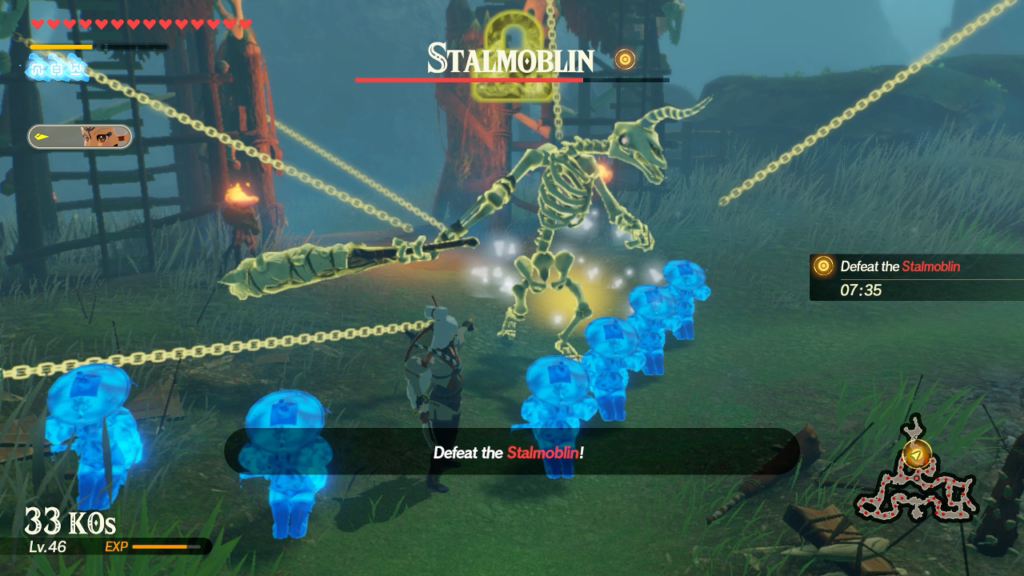
Age of Calamity doesn’t only borrow its setting from Breath of the Wild, it also adapts many of its combat and environmental mechanics. These can be exploited to force an enemy commander’s stagger meter to appear. Warriors with shields, like Link and Urbosa, can reveal the meter if I deflect an attack with precise timing. Every warrior can unleash a Flurry Rush of attacks straight onto the meter if I dodge an attack at the last millisecond. Detonating explosive barrels stuns commanders long enough to drain their stagger meters in one go. Commanders standing in water can be stunned with a lightning blast created with a magic rod taken from a Wizzrobe enemy, while Fire-infused commanders are instantly stunned by an ice rod blast.
Every warrior has access to the Sheikah Slate, a magical tablet computer, and I can situationally apply its runes to force stagger meters to appear. Commanders hiding behind shields are stunned by Bomb rune blasts. The Magnesis rune can snatch heavy metal weapons from commanders and hurl them back at their former owners. The Stasis rune stops a commander’s wild swinging in its tracks. Cryonis creates a pillar of ice that charging commanders will slam straight into. The list of tactics that force the stagger meter to appear is long, and like the combos, changes in effectiveness based on the warrior being used.

There’s an idea out there that the original Hyrule Warriors is “that videogame where you press Y until you win.” This is a frustrating idea not only because it ignores the unique mechanics each warrior brings to battle but also because it’s not entirely untrue. A player can finish Hyrule Warriors ignoring their chosen character’s special abilities, but they’re not going to have fun doing it. Age of Calamity tries to counter this mindset by putting character mechanics front-and-center—all warriors get a dedicated tutorial level—and making these mechanics much harder to ignore to be successful.
Each warrior has a unique ability they activate when I press the ZR trigger. Link unleashes a barrage of arrows I can aim with a third-person targeting reticle—handy for sniping explosive barrels from a safe distance. Impa stamps enemies with magic symbols that, when absorbed by one of her combos, become up to six energy clones that fight alongside her for a short while. Mipha’s combos create water fountains she can dive out of with a ZR press, setting her up for her next combo, then her next, and so on to infinity. Daruk’s combos create molten rock formations which he can either leap off of to gain speed and distance, or detonate for additional damage. Urbosa absorbs electrical energy which she unleashes at the end of her combos.
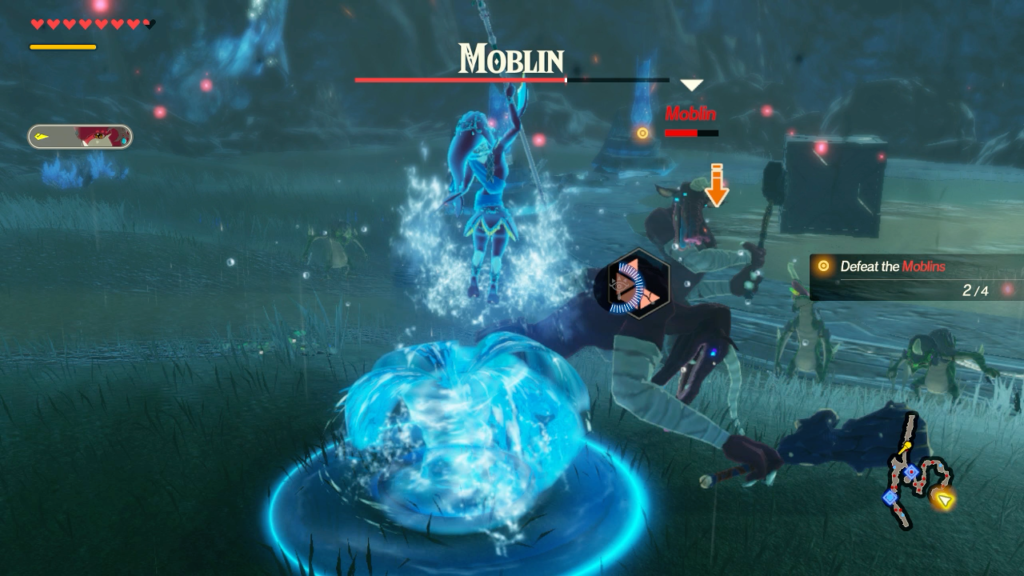
Zelda’s unique ability is the most radical. She uses the Sheikah Slate as her primary weapon and has far fewer combos than her allies, but I can use a ZR press to empower her finishers in different ways. A metal box, swung like a club with Magnesis, is slammed onto enemies’ heads. Cryonis shards rain down on enemies, then detonate when their allies move in. A massive Bomb on spider legs charges into a crowd then explodes when it reaches the center. Zelda’s combos are the most limited of all the warriors, but the many ways they can be exploited gives her the most unique abilities.
“Hyrule Warriors has no depth” has always been fiction, but Age of Calamity creates greater diversity among the warriors’ unique mechanics then makes those mechanics mandatory to succeed, laying that fiction bare.

Age of Calamity uses a sprawling map interface for navigation between missions and character development. Like the Breath of the Wild map it imitates, at the outset the map is blank but by the ending it is strewn with hundreds of markers. Each marker represents a different mission. Some missions are story battles. Others are side battles, explicitly non-canon “anomalies” that allow Hyrule’s warriors to battle in situations the main plot does not justify. Some unlock shops where I can buy materials and upgrade weapons. The vast majority are one-time turn-in quests that use battle rewards to provide an upgrade to a warrior such as an extra heart container or extending their combo length.
This map quickly becomes cluttered and difficult to read, missions I haven’t completed almost indiscernible from ones I have and arrayed in no particular order of progression or difficulty. By using the shoulder buttons I can see all missions in a list. This is no easier to navigate but is organized in a more logical way that I immediately preferred to scrolling across a poorly-designed map. The map makes sense as another way Age of Calamity connects itself to Breath of the Wild but as a tool to navigate between battles and menus it’s confounding and ponderous.
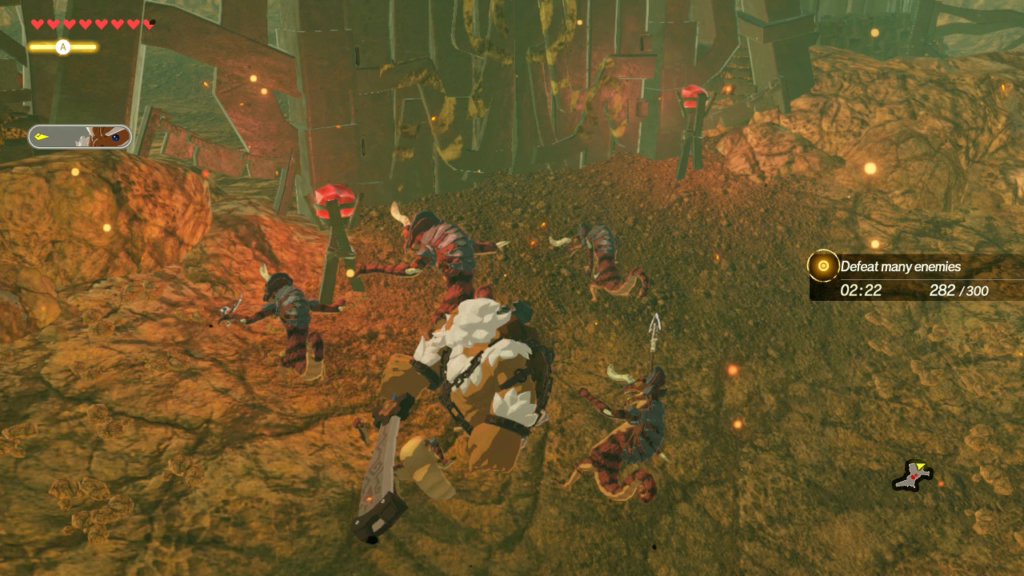
The quality of Age of Calamity’s battle missions are mixed. Story missions tend to be long, punctuated by shifting objectives, multiple cutscenes, and sometimes even multiple maps, but they keep the plot moving forward and the energy high. They are the best missions on offer. Side missions are another matter. Many offer a straightforward objective on a small map like fighting into a stronghold and defeating the boss located there. These missions can be completed in a few minutes and demonstrate Hyrule Warriors design at its tightest.
Other side missions are where the quality breaks down because they seem to deliberately eschew Hyrule Warriors’ strengths. Some require a certain number of enemies to be defeated within a time limit with the wrinkle that enemy numbers dwindle the closer I come to the goal. Running back and forth killing five or six enemies at a time feels antithetical to Hyrule Warriors design, especially when regular battles fling hundreds of enemies at me at once without a thought. Escort quests—yes, there are many escort quests—have a similar problem where my charges refuse to continue to the objective until every single enemy soldier has fallen. Detonating an explosive attack that wipes out an entire enemy group feels deflating when I then have to use a second attack to take out the one harmless enemy I missed before my charge will continue to the objective.
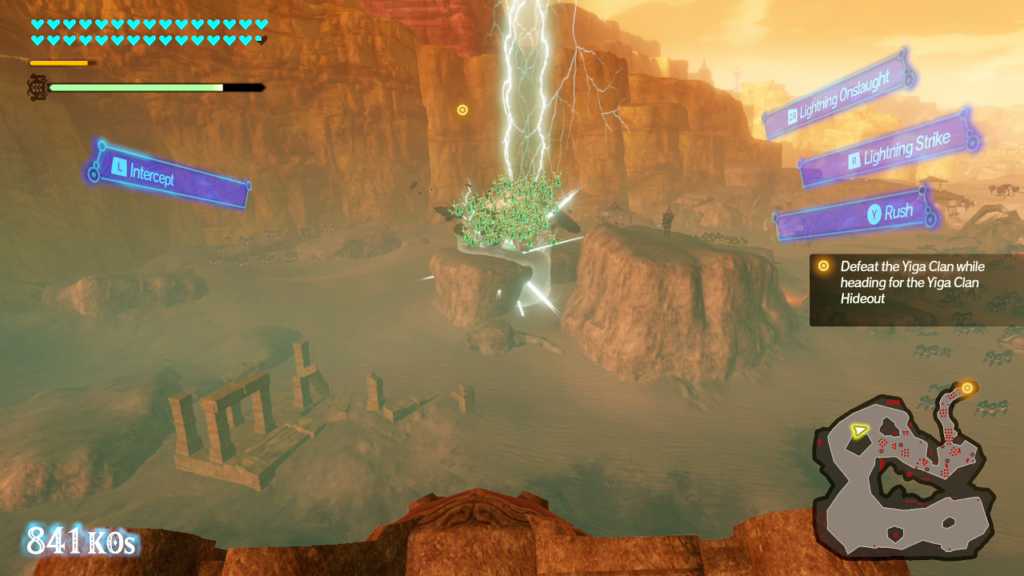
Weakest of all are the Divine Beast missions. Putting me in command of the behemoth battle engines that signpost Link’s quest in Breath of the Wild, these missions inflate the scale of the conflict but deflate its depth. Each has an array of powerful weapons at its disposal but I find all that’s needed is their primary weapon, blasting away literally thousands of enemies with a single volley. Mission objectives are limited to either blowing everything up on the way to a capture point or blowing everything up in general. The Divine Beast missions are as tedious and shallow as Hyrule Warriors’ regular design is claimed to be, a horrible mistake that communicates these machines’ destructive power but not realizing unstoppable power is boring.
Breath of the Wild veterans have probably been asking themselves “how can all the warriors use the Sheikah Slate’s powers, the Runes weren’t even activated during the Calamity.” The answer to that is a spoiler. I can’t describe my feelings about Age of Calamity’s plot without talking about these spoilers, so if you want to experience its story yourself then skip down to the last paragraph of this review.
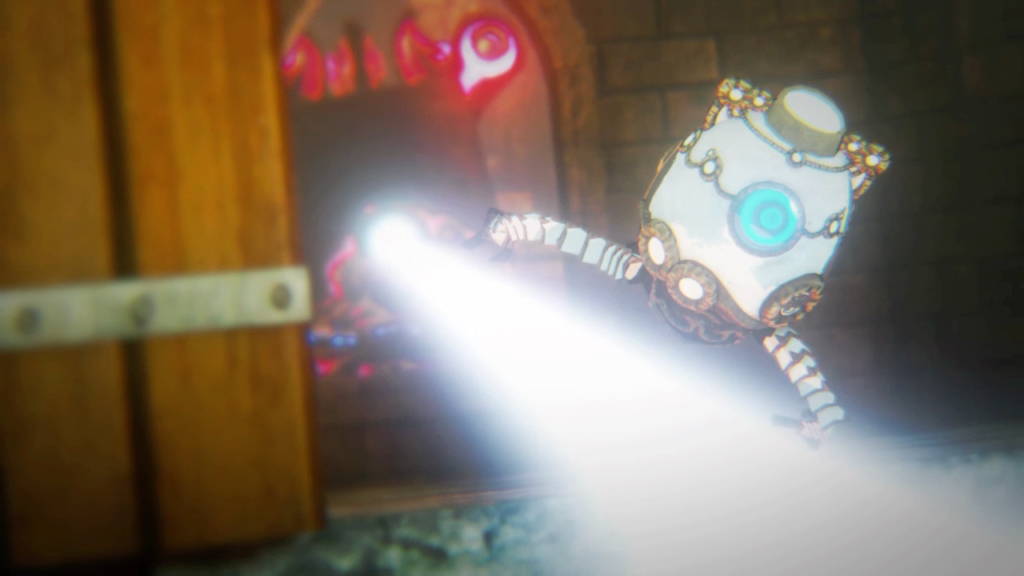
Age of Calamity’s plot kicks off when a miniature Guardian, one of the fearsome spider-like automatons that were instrumental in Calamity Ganon’s victory, travels back in time and warns Zelda about the coming apocalypse. It also restores the Sheikah Slate to full power and raises the Sheikah Towers a whole century before their activation in Breath of the Wild. I try to accept this conceit as an excuse to include more of Breath of the Wild’s recognizable mechanics, particularly the Sheikah Slate Runes, in a story set before those mechanics were available to the heroes. Then things really go off the rails.
Despite their best efforts to gather Hyrule’s Champions and restore the Divine Beasts, Zelda and company are still unprepared for the arrival of the Calamity. Calamity Ganon’s minions are about to kill the Champions and seize control of the Divine Beasts, spelling Hyrule’s doom just as before, when suddenly the Champion’s successors arrive through time portals of their own. And yes, this means Sidon, Yunobo, Riju, and Teba are playable in the third act.

Each Champion and their future counterpart are able to defeat the Ganonblights, ensuring the Divine Beasts remain under their control. The Guardian army is still turned but are easily swept aside by the sheer power of the uncorrupted Divine Beasts. Everything goes according to plan and Calamity Ganon is defeated along with his new minion Astor, who I have not mentioned until now because he is that irrelevant to the conflict.
To say I was disappointed by Age of Calamity’s plot would be an understatement. Frankly, it made me a little angry. The initial time travel already overrides all the original Breath of the Wild flashbacks, many of them now-iconic moments in the franchise, then further time travel shenanigans pull it completely asunder. Maybe Breath of the Wild has become too much of a sacred cow and is due a reckoning, but this is the wrong way to do it. Hyrule Warriors is supposed to be a celebration of the Legend of Zelda series, but Age of Calamity feels like it disrespects Breath of the Wild’s story and themes. It literally overwrites them to create a happier and less meaningful ending.
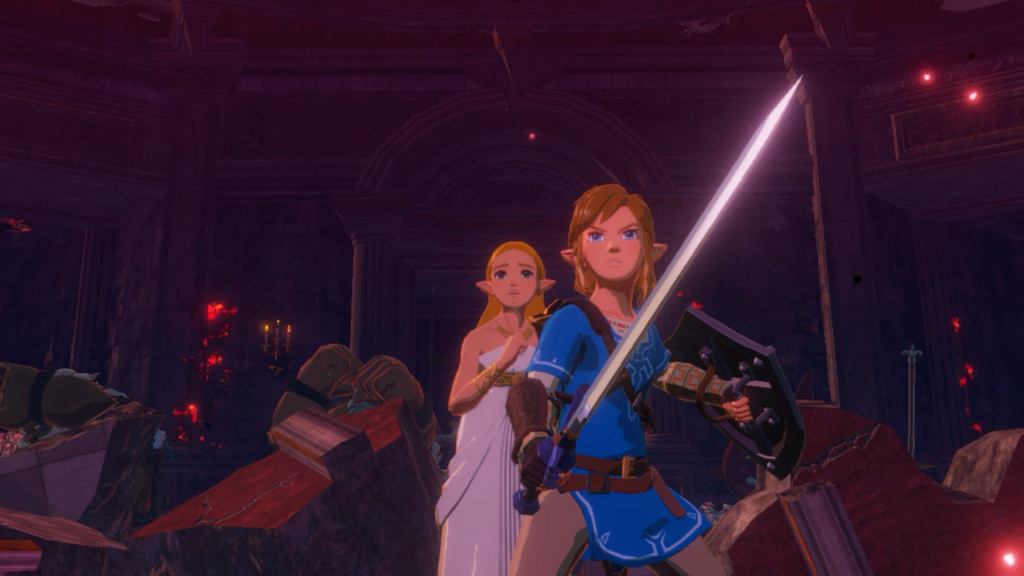
By taking graphics and mechanics from Breath of the Wild and adapting them to Hyrule Warriors design, Age of Calamity creates an effective synthesis. This looks like a prequel to Breath of the Wild and plays like a sequel to Hyrule Warriors. Most triumphantly, it brings the depth of Hyrule Warriors’ combat into focus, firmly shutting down the common accusation that it’s a lazy, boring, thoughtless, button-mashing grind. But its missions are unvaried and do not play to the series’ strengths. Worse still, in a series meant to celebrate the Legend of Zelda, Age of Calamity’s plot doesn’t celebrate Breath of the Wild. It does the opposite. Age of Calamity has its strengths, but it has far too many weaknesses to offset them.